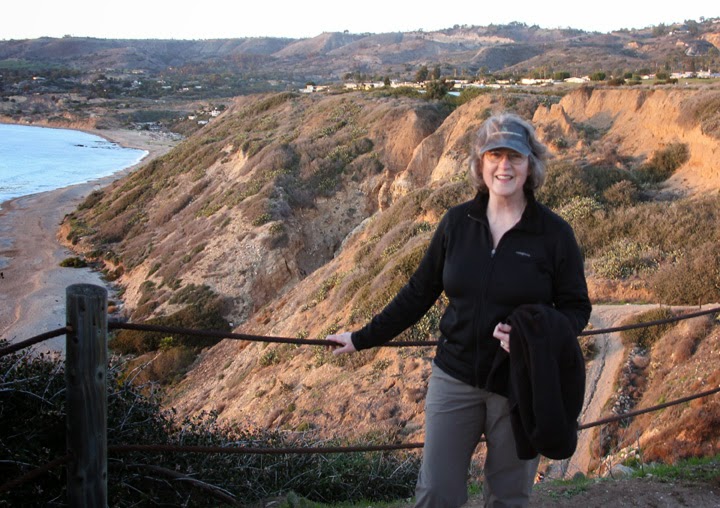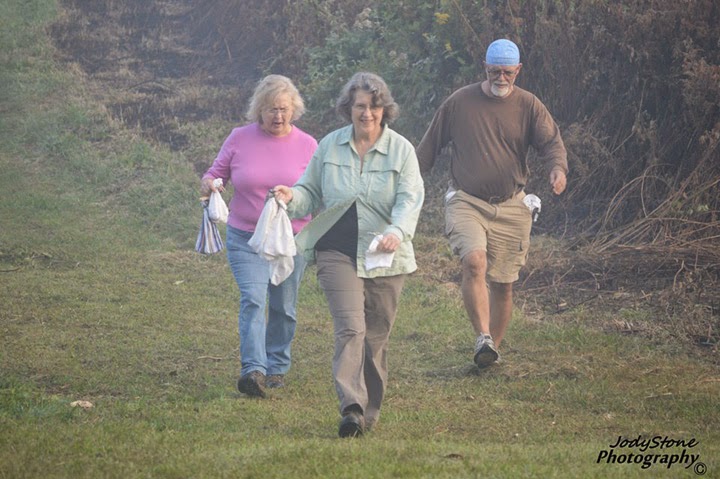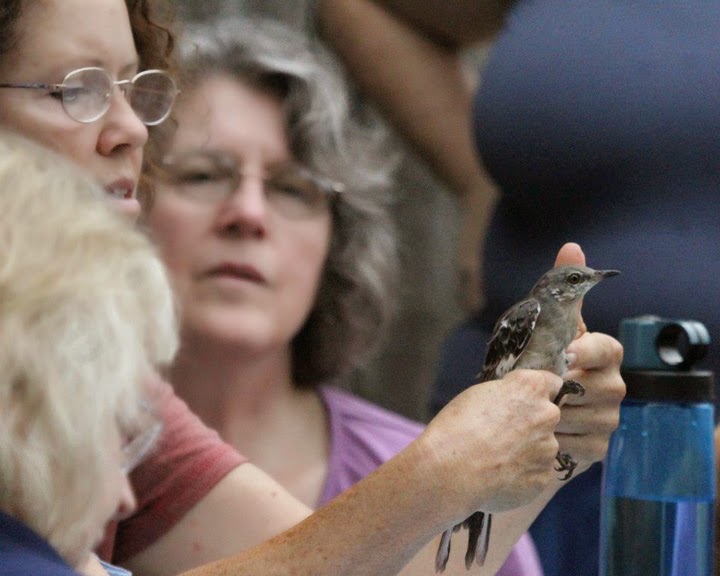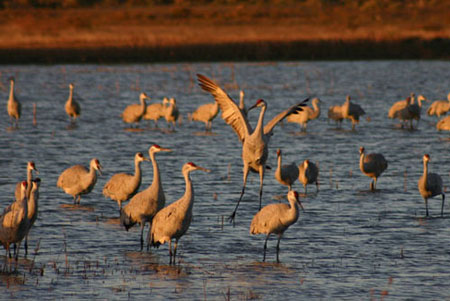 n time to write a quick post. The past couple of days have been busy with orientation to Brevard County, FL, as I visit Florida's wintering birds and attend the Space Coast Birding and Wildlife Festival.
n time to write a quick post. The past couple of days have been busy with orientation to Brevard County, FL, as I visit Florida's wintering birds and attend the Space Coast Birding and Wildlife Festival.Marge, of Space Coast Beach Buzz and FloridaBeachBasics, has been my gracious hostess, both making my visit here possible and especially enjoyable.
Yesterday I visited the Ritch Grissom Memorial Wetlands at Viera with photographer and Master Naturalist, Charlie Corbeil. Charlie is pictured below (courtesy of Marge). Charlie's beautiful photo decorates the wetland's welcome sign.
 And here is a glimpse of just a few of the birds (and critters) we enjoyed at the wetlands.
And here is a glimpse of just a few of the birds (and critters) we enjoyed at the wetlands.  Above a Wood stork pauses before rejoining his flock mates. This was undoubtedly the closest I have ever been to one of these birds. I loved seeing all the details in the image. It will be fun to sketch this curious face! (Click on the images to enlarge.)
Above a Wood stork pauses before rejoining his flock mates. This was undoubtedly the closest I have ever been to one of these birds. I loved seeing all the details in the image. It will be fun to sketch this curious face! (Click on the images to enlarge.)Below, a baby alligator rests on a pond lily. A Pied-billed Grebe, just up from a dive, feeds in the water along with thousands of other waterfowl.
A Pied-billed Grebe, just up from a dive, feeds in the water along with thousands of other waterfowl.  Beautiful American Anhingas, some nesting and posturing, others resting and preening, were perched or flying around--lots of them! A male is pictured below. Enlarge to get a better look at the green markings around his eyes.
Beautiful American Anhingas, some nesting and posturing, others resting and preening, were perched or flying around--lots of them! A male is pictured below. Enlarge to get a better look at the green markings around his eyes.
 There were many other beautiful birds at the wetlands that I will show you a bit later. On Wednesday, the 27th, the Space Coast Birding and Wildlife Festival will launch its activities full swing, bringing thousands of bird and nature lovers to Brevard County.
There were many other beautiful birds at the wetlands that I will show you a bit later. On Wednesday, the 27th, the Space Coast Birding and Wildlife Festival will launch its activities full swing, bringing thousands of bird and nature lovers to Brevard County.
If you are attending the festival, visit Space Coast Eco for informative descriptions of key natural areas that are included in field trips, as well as directions and description of facilities. And to find reports on festival events, don't miss David's special Space Coast Festival Blog the Beach reports, including local weather conditions, event reports and all kinds of interesting festival news.



























